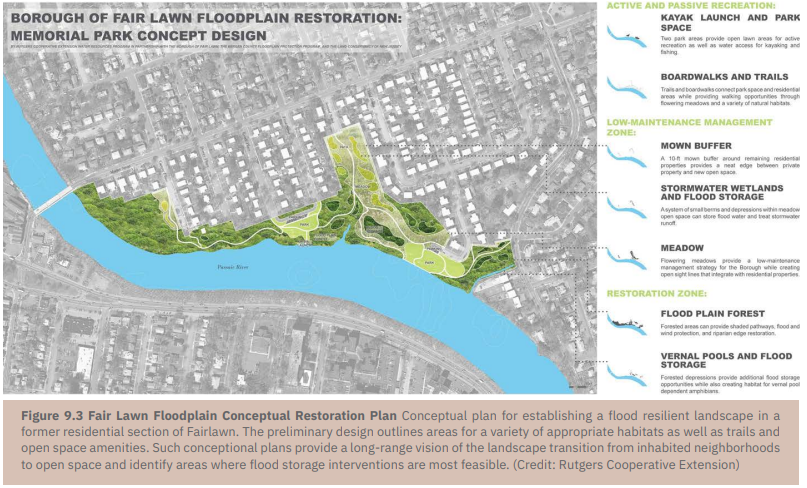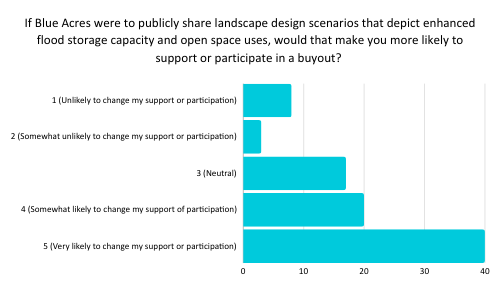
Warning: Undefined variable $prefix in /home/site/wwwroot/wp-content/plugins/bootstrap-breadcrumb/vc-breadcrumb-element.php on line 113
Land Use Visioning Increases Support for and Participation in Flood Buyouts
Last modified on May 20th, 2025 at 11:54 am
September 18, 2024

Blue Acres administered an online survey to understand if more public engagement is needed around buyouts and to see if post-buyout land use visioning efforts would improve support for buyout participation and community land stewardship. For context, land use “visioning” refers to preparing digital renderings of a site that display proposed restoration options for implementation. The visioning being discussed in this survey would occur in consultation with community members to provide visual examples of how the land might be utilized once it becomes open space.
Survey Distribution
The short, seven-question survey went live on February 28th, 2024, and accepted survey responses for sixty-two days, concluding on April 30th. To solicit responses, it was shared via email with those on the Blue Acres listserv and the Governor’s Office of Innovation’s email list. The survey was also promoted by Blue Acres staff during presentations at three professional conferences during March and April.
Survey Responses
The survey yielded eighty-six responses from community members, homeowners, or government representatives. Most respondents (93%) seemed to favor more public engagement around buyouts, and over 87% of respondents felt that if visual aids were available to define post-buyout land use, they would be more likely to support buyouts. Similarly, the responses to two questions asking how participants connect open space to flood protection showed that most people believe more open space in the floodplain and a naturally functioning floodplain can meaningfully reduce damage from flooding, 94.3% and 76% respectively. Likewise, the majority of respondents indicated they support funding to address long-term management of buyout lands.
Survey Outcomes
The responses collected support Blue Acres’ ongoing initiatives to better engage communities focusing on flood risk and mitigation communications and post-buyout land use visioning. By creating opportunities for post-buyout land use visioning, Blue Acres aims to grow support for buyouts while empowering community members to advocate for the optimization of buyout lands to meet community goals and needs such as climate resilience, beautification, passive recreation, etc.
Blue Acres thanks all who participated—community feedback is essential as the program works towards innovative, sustainable solutions for flood-impacted areas.
